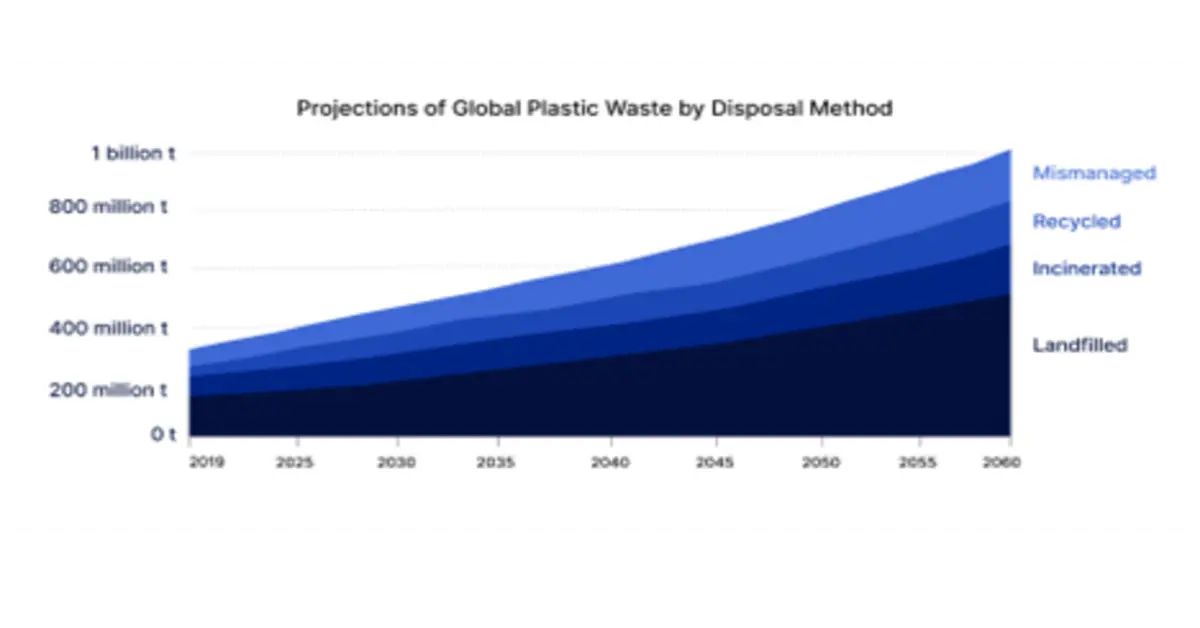Published Date : 09 October 2025
Posted by : Abhishek Bhardwaj
In a world increasingly aware of its environmental impact, packaging has become one of the most visible signs of the use-and-dispose culture. From single-use plastics to overly sized shipping boxes, traditional packaging methods are under strict scrutiny for obvious reasons. The global packaging industry is accountable for over 36% of all plastic generated, much of which ends up polluting the oceans, landfills, and the environment.
The shift toward sustainable packaging is not just driven by ideology; it is strongly supported by data, market trends, and consumer behavior. The numbers reflect a powerful transition across industries, geographies, and demographics, reinforcing that sustainability is now central to innovation and competitiveness in packaging. According to Research Nester insights, the global sustainable packaging market was valued at USD 351.3 billion in 2024 and is projected to reach USD 816.2 billion by 2035, registering a CAGR of 6.5%.
Globally, only 9% of plastic packaging waste is recycled, according to OECD 2023 data, and around 36% of plastic produced is used in packaging, with 85% of it ending up in landfills or the environment. Moreover, the U.S. Environmental Protection Agency (EPA) reported that containers and packaging account for over 82 million tons of municipal solid waste annually in the U.S., representing 30% of total waste. The graph below sheds light on the estimated plastic waste from different disposable methods.

Source: OECD
To cater to this issue, several governments and companies are switching to sustainable packaging and solutions. As per reports, sustainable packaging can reduce carbon emissions by 30%-70%, depending on the material and supply chain model. Moreover, reusable packaging systems have been shown to cut single-use waste by up to 90% over five years in pilot programs across the EU and the U.S.
Industry Examples: Who’s Leading the Way?
Many global companies are leading by example when it comes to applying sustainable packaging. A few of the top companies that have implemented sustainable packaging are as follows.
|
Company |
Sustainable Packaging Initiatives |
|
Unilever |
- All plastic packaging to be recyclable, reusable, or compostable by 2025 - Refillable bottle trials- Launching tablet/bar form products to reduce the need for packaging |
|
IKEA |
- Replaced polystyrene with mushroom-based packaging - Plans to eliminate single-use plastic in packaging by 2028 |
|
Nestlé |
- Established an Institute of Packaging Sciences - Focused on developing safe, functional, and eco-friendly materials |
|
Loop |
- Offers products from major brands in reusable packaging - Collects, sterilizes, and refills returned containers for reuse |
Principles of Sustainable Packaging Design
To achieve true sustainability in packaging, manufacturers, designers, and businesses must go beyond surface-level changes. They must integrate eco-conscious thinking at every stage of the packaging life cycle, from concept and design to disposal and reuse. The following principles form the base of sustainable packaging design:
Reduce
The first and most impactful step in sustainable packaging is reducing the amount of material used. By developing smarter, smaller, and more efficient packaging, companies can protect resources and limit waste from the outset.
- Lightweighting: This includes reducing the thickness or weight of packaging materials without compromising on structure. Lighter packaging also leads to minimal transportation costs and emissions.
- Proper sizing: Perfect sizing packages to fit the product right avoid excessive material and unnecessary packaging fillers such as bubble wrap or Styrofoam.
- Material efficiency: By using less plastic or paper per unit, manufacturers can reduce plastic consumption and production energy. This principle is not just beneficial for the surroundings but also helps in cost savings in logistics and production.
Reuse
Reusable packaging ideas are becoming extremely popular, mainly in e-commerce and logistics. Instead of discarding it as waste after a single use, packaging can be made in such a way that offers multiple uses. The reuse initiative also builds brand loyalty. Consumers appreciate functional packaging, aesthetically pleasing designs, and versatility in designs to be kept and repurposed.
- Refillable containers: cleaning supplies, shampoos, and beverages are now available in refillable packaging solutions, where consumers can restock required products without discarding the original bottle.
- Returnable systems: Businesses such as Loop and TerraCycle are leading in closed-loop logistics, where the packaging is collected, sanitized, and restocked for further use.
- Durable designs: Boxes or containers made from sturdy, washable materials such as glass, stainless steel, or hard plastic can be reused a number of times before reaching end-of-life.
Recycle
Recycling omits the need for virgin materials and keeps waste out of landfills. Sustainable packaging should be easily recyclable, using materials that are widely accepted by municipal recycling systems.
- Mono-materials: Using a single type of material (e.g., 100% polyethylene) rather than complex combinations (like foil-laminated pouches) improves recyclability.
- Clear labeling of products: Educating consumers with prompt recycling guidelines, such as disposal symbols and QR codes, helps mitigate contamination in recycling streams.
- Post-consumer recycled (PCR) content: Integrating recycled material into packaging, for instance, recycled PET bottles or paperboard, closes the loop and reduces dependence on new raw materials.
Renew
One of the most remarkable shifts in sustainable packaging is the transition to materials extracted from renewable resources that are biodegradable or compostable. The key is to make sure that these materials decompose under real-world conditions and are supported by local composting infrastructure to prevent unintended consequences.
- Bioplastics: Gained from plants, mainly corn, sugarcane, or cassava, bioplastics such as PLA (polylactic acid) provide similar functions to conventional plastic but decompose naturally under industrial composting conditions.
- Natural fibers: Materials such as hemp, jute, palm leaves, or banana fibers are biodegradable and can be locally sourced to reduce environmental impact.
- Mushroom and seaweed packaging: These next-gen materials provide strong structural properties and break down in home compost systems, removing long-term waste.
Rethink
True innovation in sustainable packaging depends on the ability to rethink not just materials, but the entire experience of packaging from function and aesthetics to lifecycle and user engagement. Rethinking is about changing old habits, adopting circular economy principles, and using creativity to design packaging systems that work better for the planet and people.
- Functionality-first design: Could the product remove packaging entirely? Consider solid shampoo bars, toothpaste tablets, or clothing wrapped in fabric instead of plastic.
- Digital solutions: QR codes and NFC tags can be used in place of printed manuals or marketing material, reducing paper use while improving customer interaction.
- System-level changes: Companies are re-evaluating logistics and supply chains to support reuse, recycling, and take-back programs.
- Consumer empowerment: Thoughtful design encourages consumers to reuse, recycle, or compost packaging correctly. Interactive labeling, storytelling, and transparency build trust and participation.
What’s Next?
Sustainable packaging is emerging as more than just a green label or a biodegradable wrapper. It represents a holistic shift in how we produce, consume, and dispose of the materials that surround our products. From innovative materials such as mushroom foam to circular systems that rethink waste entirely, the industry is evolving quickly. For businesses, embracing sustainable packaging is no longer an option; it is a critical component for environmental responsibility and brand responsibility. For consumers, every conscious decision made sends a thought-provoking message that sustainability matters. In the end, the packaging of tomorrow is about more than protecting products; it's about protecting the planet.
Contact Us







